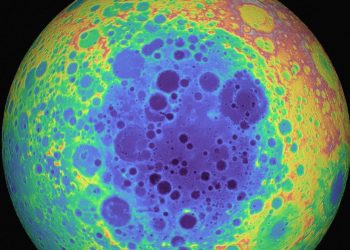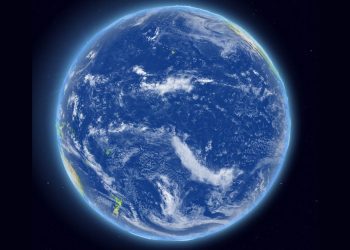Something may be moving in the world’s largest ocean current. New research suggests that this vast conveyor belt of cold water around the South Pole could change its location over the coming centuries or even millennia, potentially reshaping the planet’s climate and ecosystems.
The Antarctic Circumpolar Current (ACC) is a vast current of cold seawater that flows clockwise from west to east around Antarctica. The main driving force behind this phenomenon is the powerful southwest winds, which sweep unhindered across the southernmost continent, unblocked by landmasses.
Acting as a crucial link between the Atlantic, Pacific and Indian Oceans, the ACC plays a key role in the movement of heat across the globe, the carbon cycle and the distribution of nutrients across the oceans. But recent studies suggest that this rate may not be as constant as once thought.
An international team of scientists pieced together the history of the ACC using cores taken 3,000 to 4,000 meters (9,800 to 13,100 feet) below the surface of the Scotia Sea, north of Antarctica.
These cores, which stretch hundreds of meters long, provide a detailed record of the current’s past. Grain size provides a crucial clue: As the current speeds up, it carries fine particles that only settle on the seafloor when the water slows down. By examining the particle size distribution, scientists can reconstruct changes in current speed over time.
By studying the grain, the team discovered that the ACC was significantly stronger in the past during warm periods.
The maps show the surface currents of the global oceans today (Holocene) – warmer red colors represent higher current speeds. The black lines represent the five main fronts of the Antarctic Circumpolar Current (ACC), from north to south.
Image credit: ©Xufeng Zheng
“The speed during the penultimate warm period, around 130,000 years ago, was more than three times higher than in the last few millennia including the current warm period,” said study author Dr. Michael Weber at the Institute of Geosciences at the University of Bonn, in a statement.
Researchers attribute this dramatic increase in speed to changes in Earth’s orbit around the Sun, which altered the amount of solar radiation and heat reaching the planet. This cycle repeats approximately every 100,000 years, and the Earth’s axis changes tilt and rotation every 21,000 years.
Additionally, they found that the ACC had moved south toward Antarctica during this same period, by about 600 kilometers (372 miles).
“This brought warmer waters closer to the Antarctic ice sheets, which may have helped raise sea levels by 6 to 9 meters (19 to 30 feet) during the last interglacial,” Weber says.
Because the ACC has changed speed and location during past warm periods, the researchers warn that a similar response could occur. Some evidence already points to an acceleration of the current due to climate change, although new modeling suggests it could drift north, thwarting a predicted southward shift caused by warming.
As a key node in Earth’s natural system, any major changes to the ACC could trigger ripple effects on ecosystems, coasts and climate systems around the world.
The new study is published in the journal Nature Communications.









